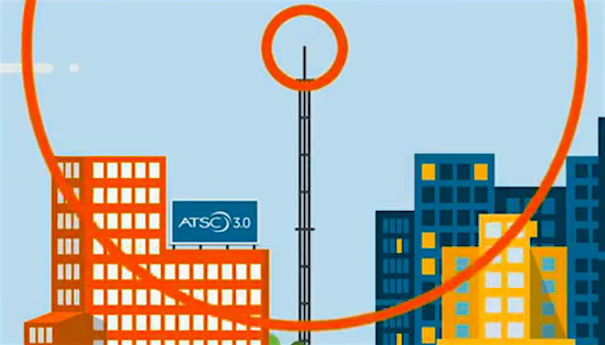NAB: FCC Should Sunset ATSC 1.0 Simulcasting Requirement
Says it will free broadcasters to experiment with new ATSC 3.0 content and features

Given a "once in a century" pandemic, no additional spectrum and "unparalleled" regulatory requirements, broadcasters say their transition to ATSC 3.0 next generation transmission technology has made "remarkable progress."
The National Association of Broadcasters made that case to the Federal Communications Commission in comments on the state of that transition, saying the lack of additional spectrum meant that they were trying to make the move "with one hand tied behind their backs."
NAB told the FCC there were some things it could do to help speed the transition, including proceeding with a 2023 sunset of the requirements that TV stations transmitting in ATSC 3.0 also continue broadcasting a channel with substantially similar content in ATSC 1.0.
Also: Noncoms to FCC: ATSC 3.0 Transition Is Challenging
That requirement is so that viewers who don't have a new TV or tuner -- the ATSC 3.0 standard is not backward compatible -- can still receive the station's primary programming. "The Commission should allow this requirement to expire and give broadcasters permission to develop new programming options," NAB said.
The FCC, in seeking comment, had suggested that without the requirement, broadcasters could provide their more desirable content only on the ATSC 3.0 signal, creating two tiers of free over-the-air service.
NAB said it was "unrealistic to expect broadcasters to fatally undermine their business in a ham-fisted scheme to compel consumers to buy new equipment." Given that most viewers are still reliant on ATSC 1.0, NAB said, its members can't afford to shift their most popular programming to ATSC 3.0.
The smarter way to stay on top of broadcasting and cable industry. Sign up below
Also: NCTA: FCC Must Maintain TV Simulcast Mandate
NAB said that what will actually happen if the FCC allows the 2023 sunset of the "substantially similar" requirement is that broadcasters will try new and different programming or features in ATSC 3.0 to try and get viewers to upgrade to ATSC 3.0 equipment. "Broadcasters are unlikely to invest the time and resources developing or acquiring different programming for ATSC 3.0 until they know they can do so
without potentially running afoul of FCC rules," NAB said.
Among the other things the FCC could do, broadcasters said, is come up with rules for the treatment of multicast streams and resolve the rules governing broadcasters' use of distributed transmission systems. ■
Contributing editor John Eggerton has been an editor and/or writer on media regulation, legislation and policy for over four decades, including covering the FCC, FTC, Congress, the major media trade associations, and the federal courts. In addition to Multichannel News and Broadcasting + Cable, his work has appeared in Radio World, TV Technology, TV Fax, This Week in Consumer Electronics, Variety and the Encyclopedia Britannica.

